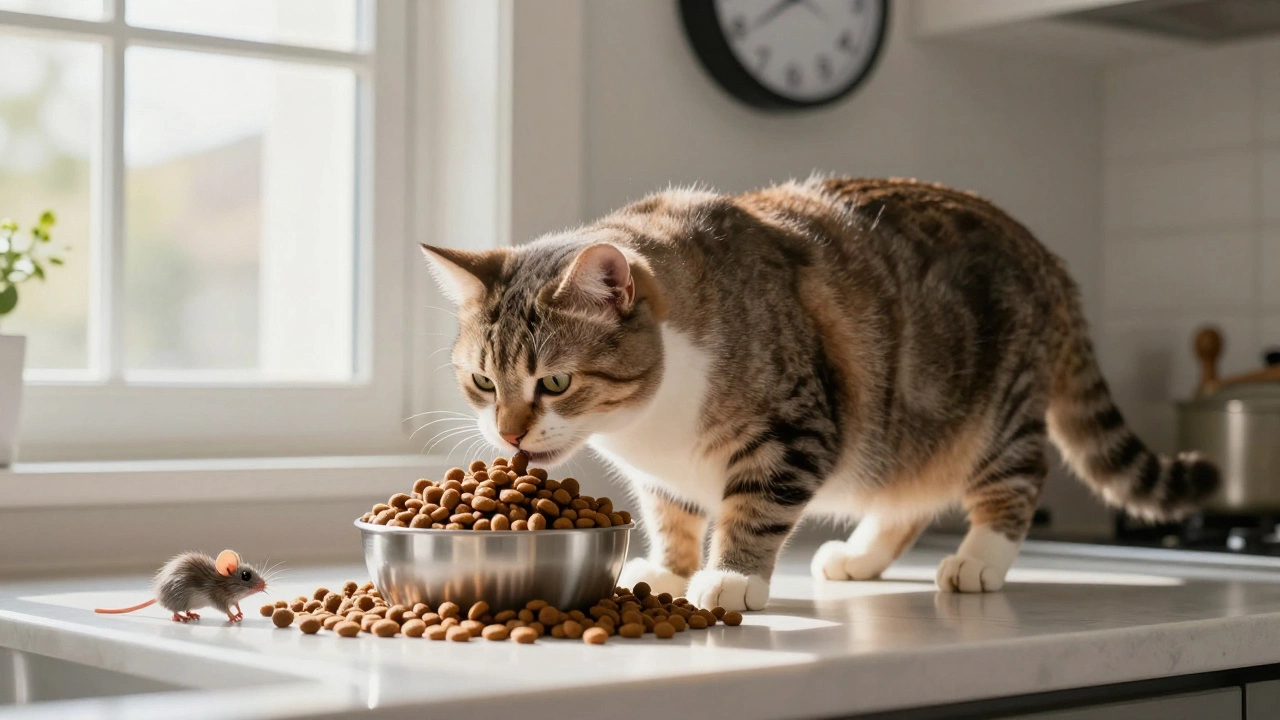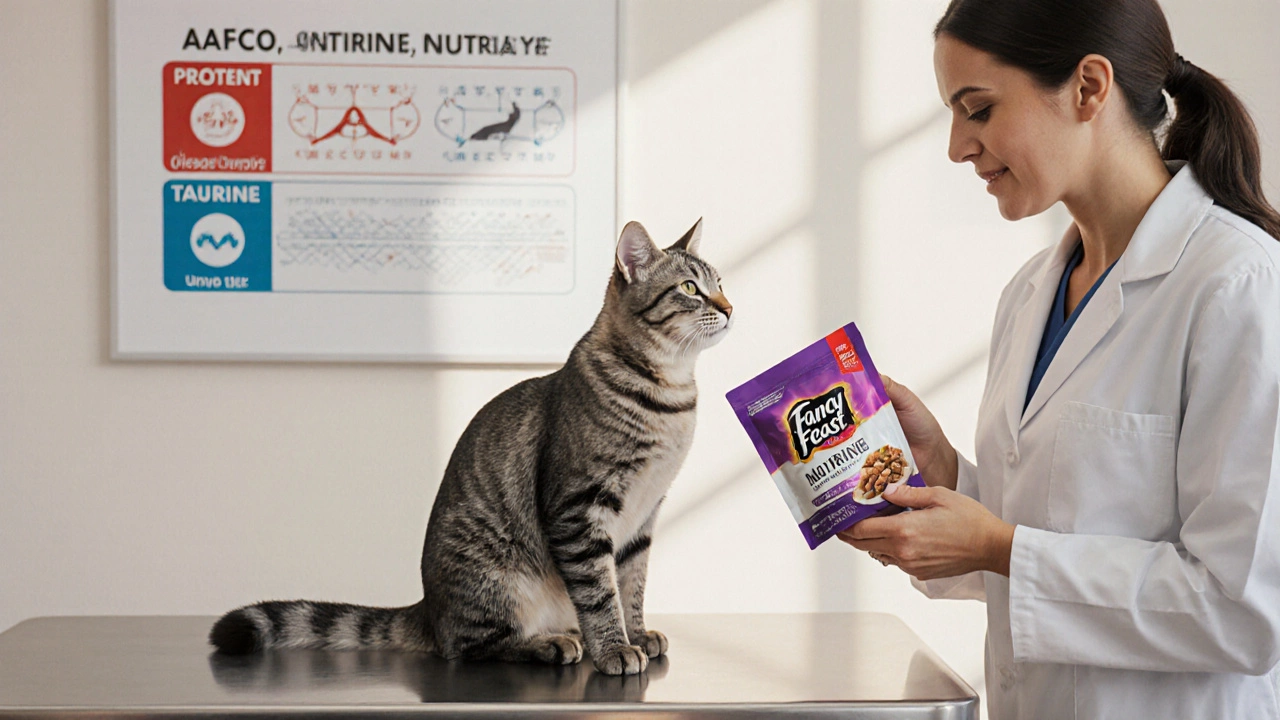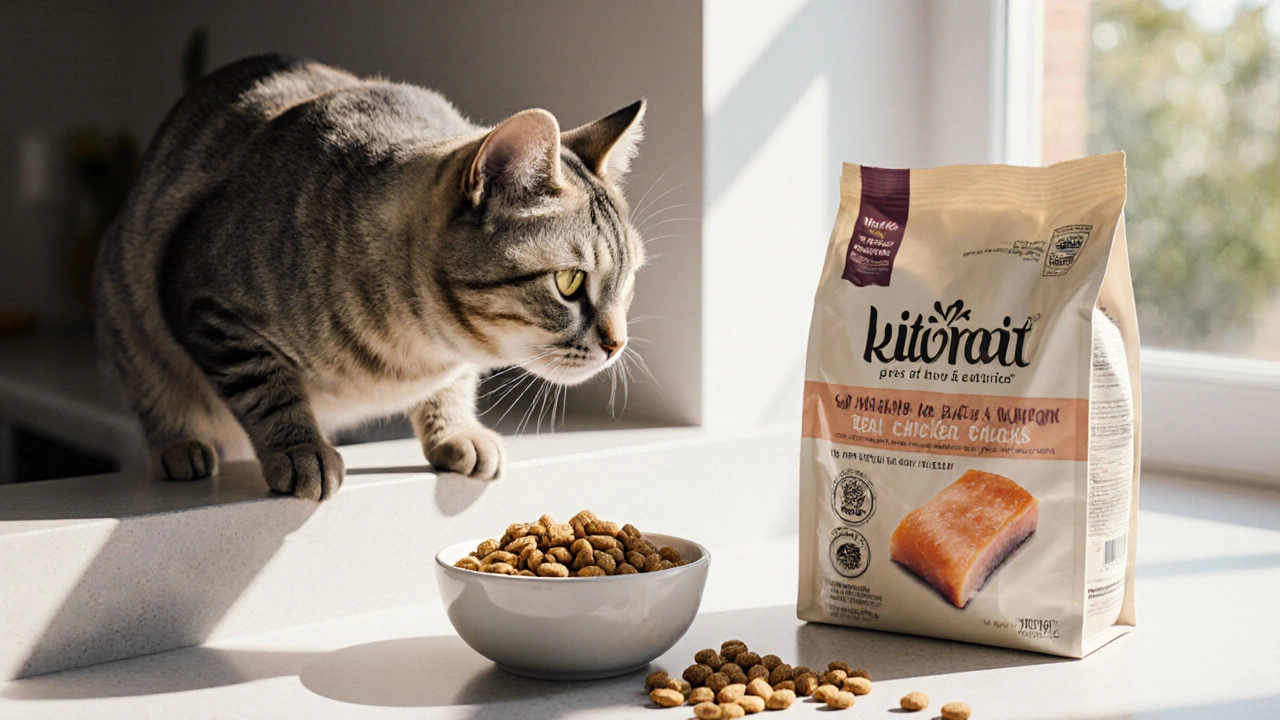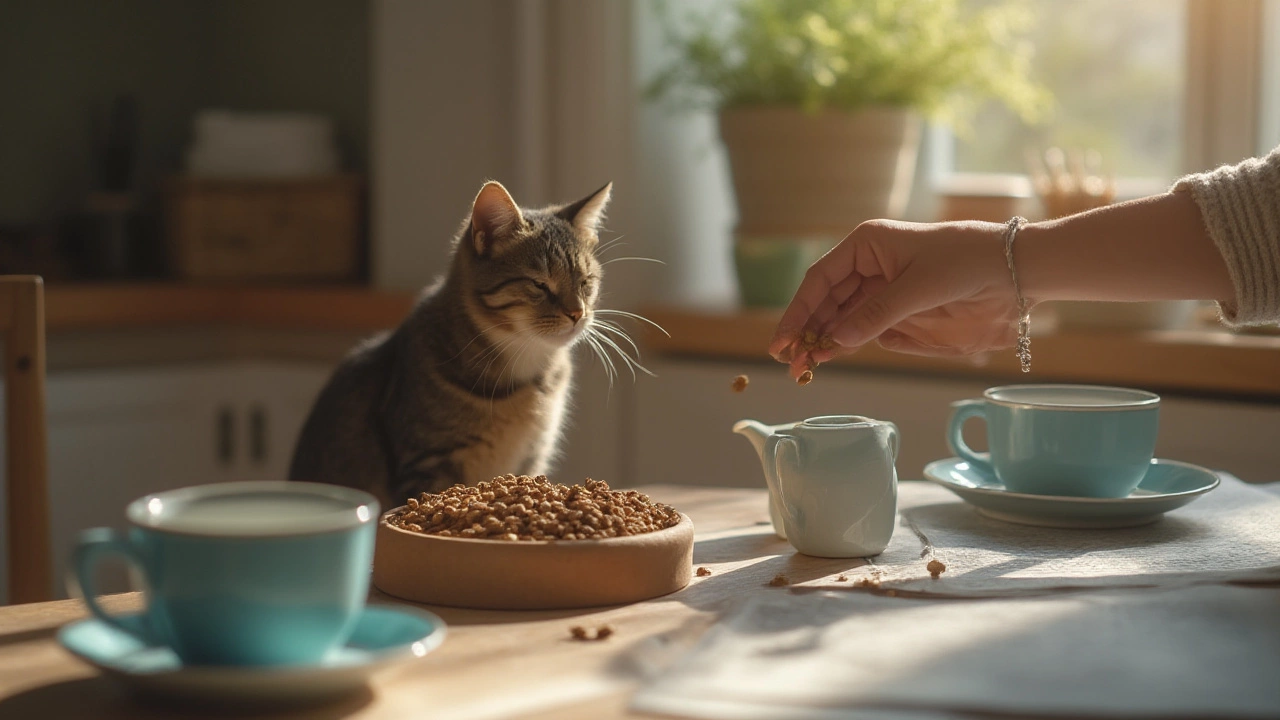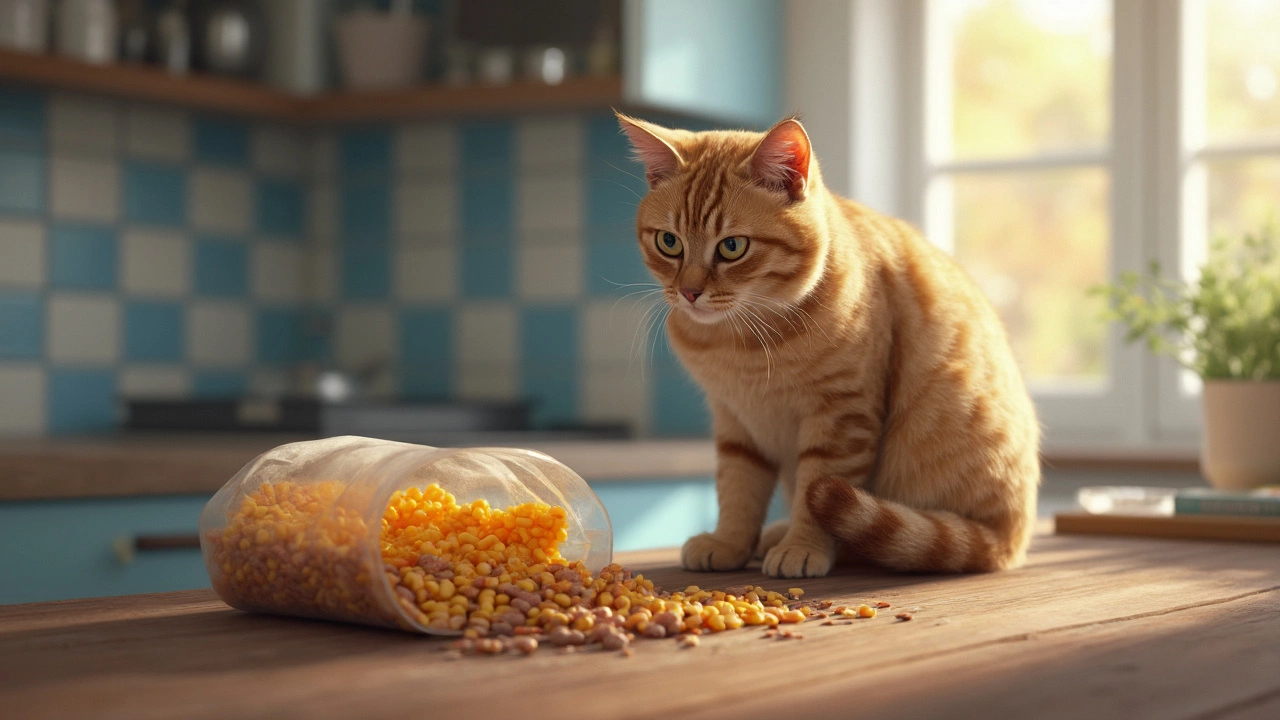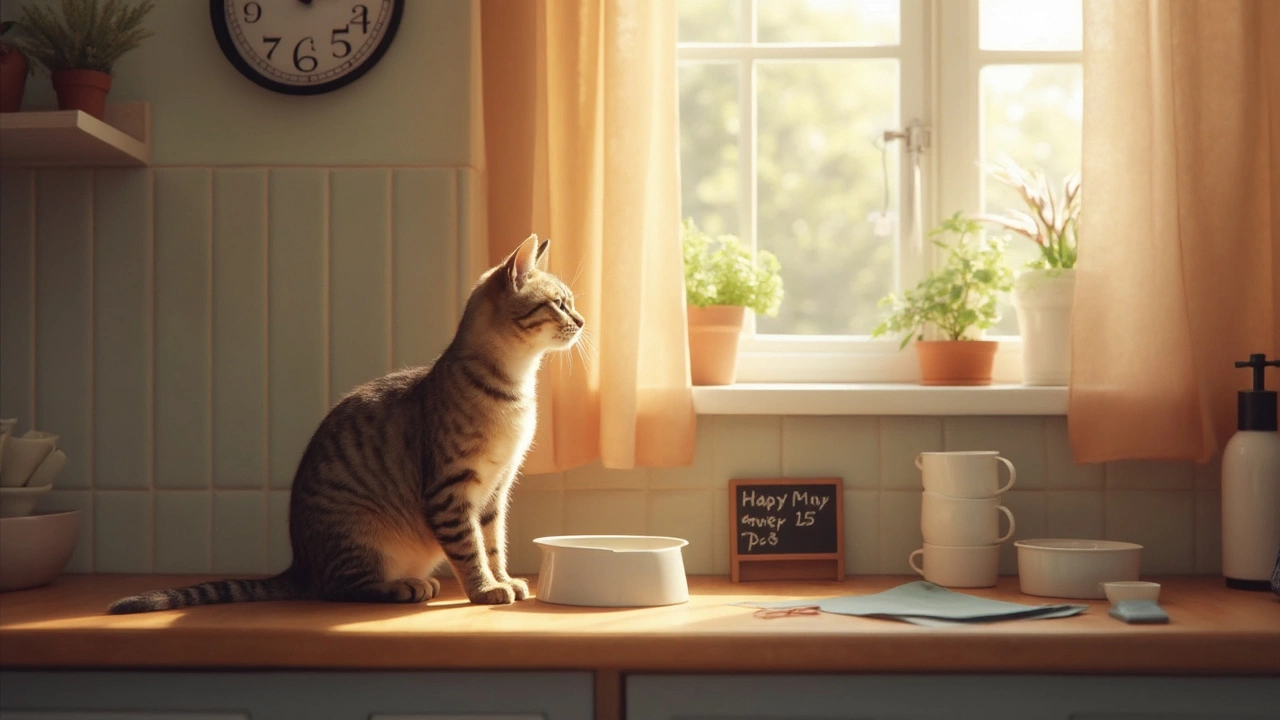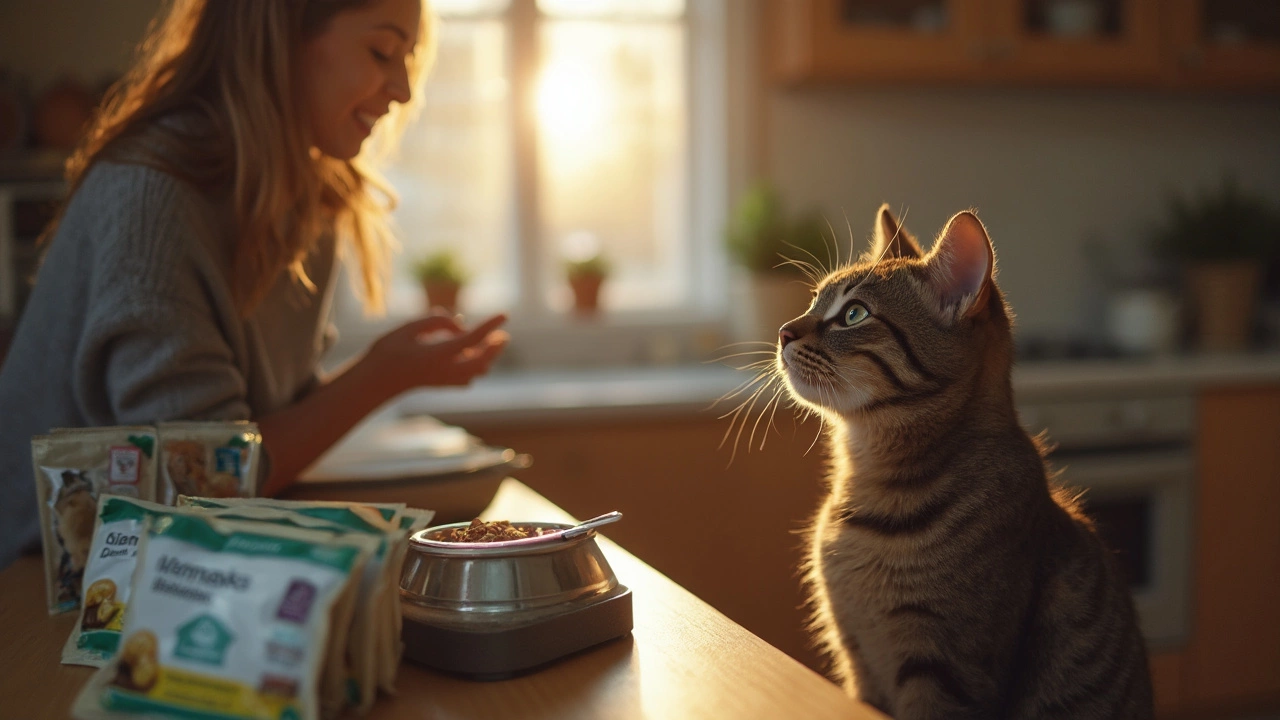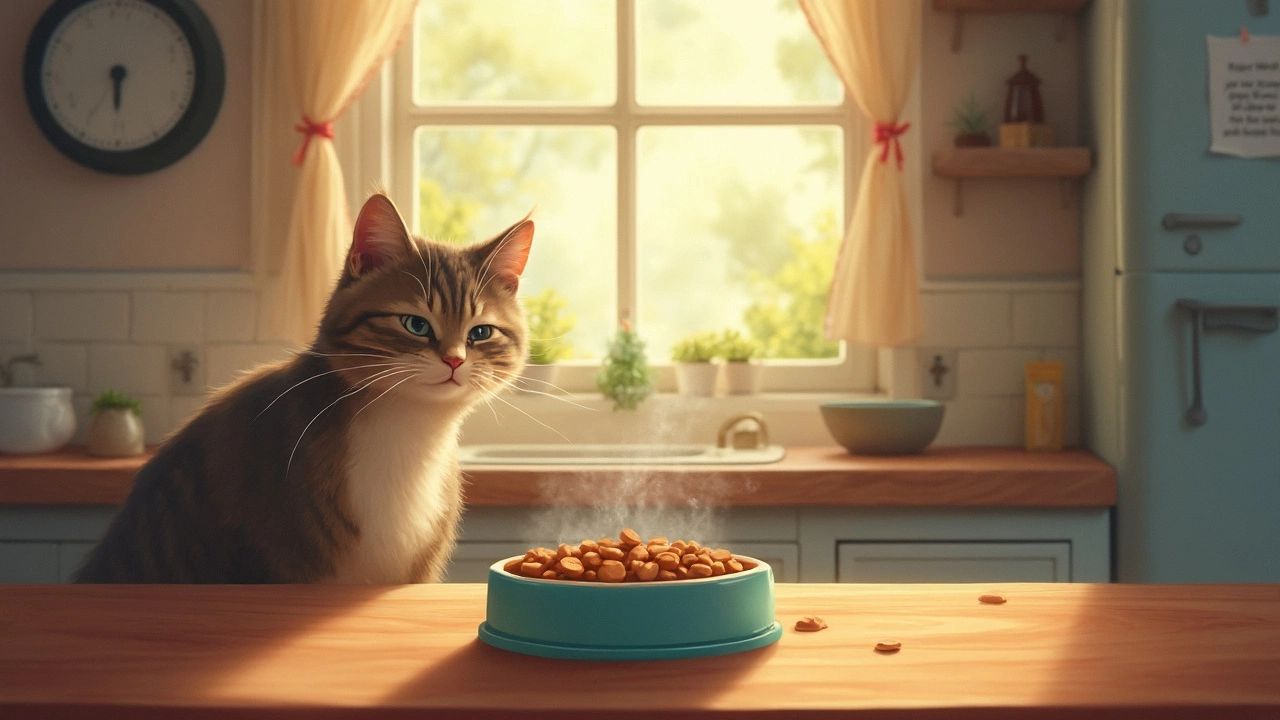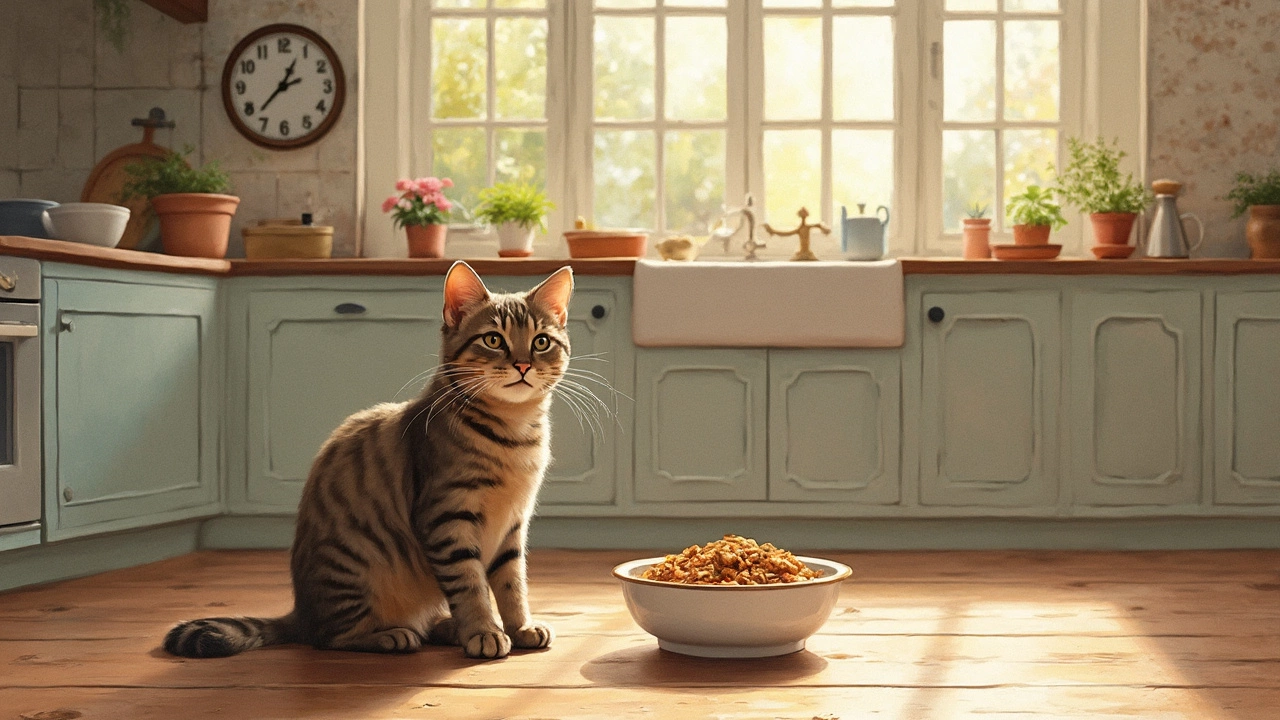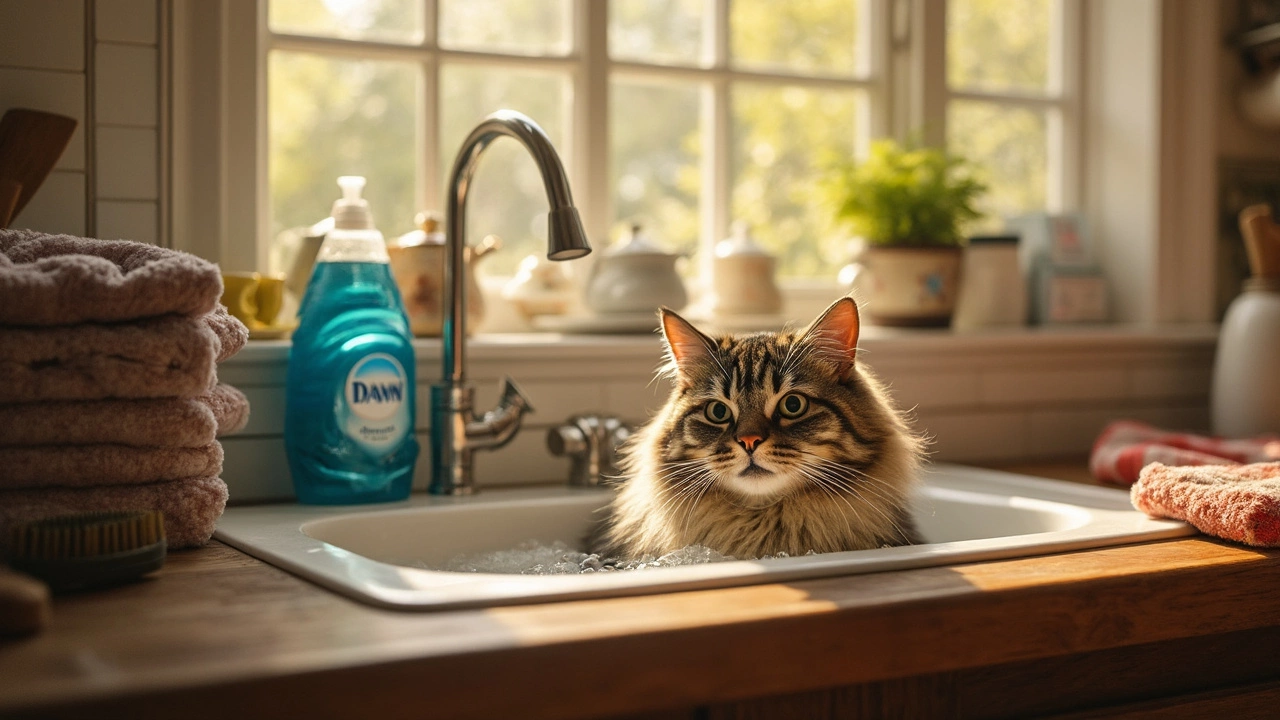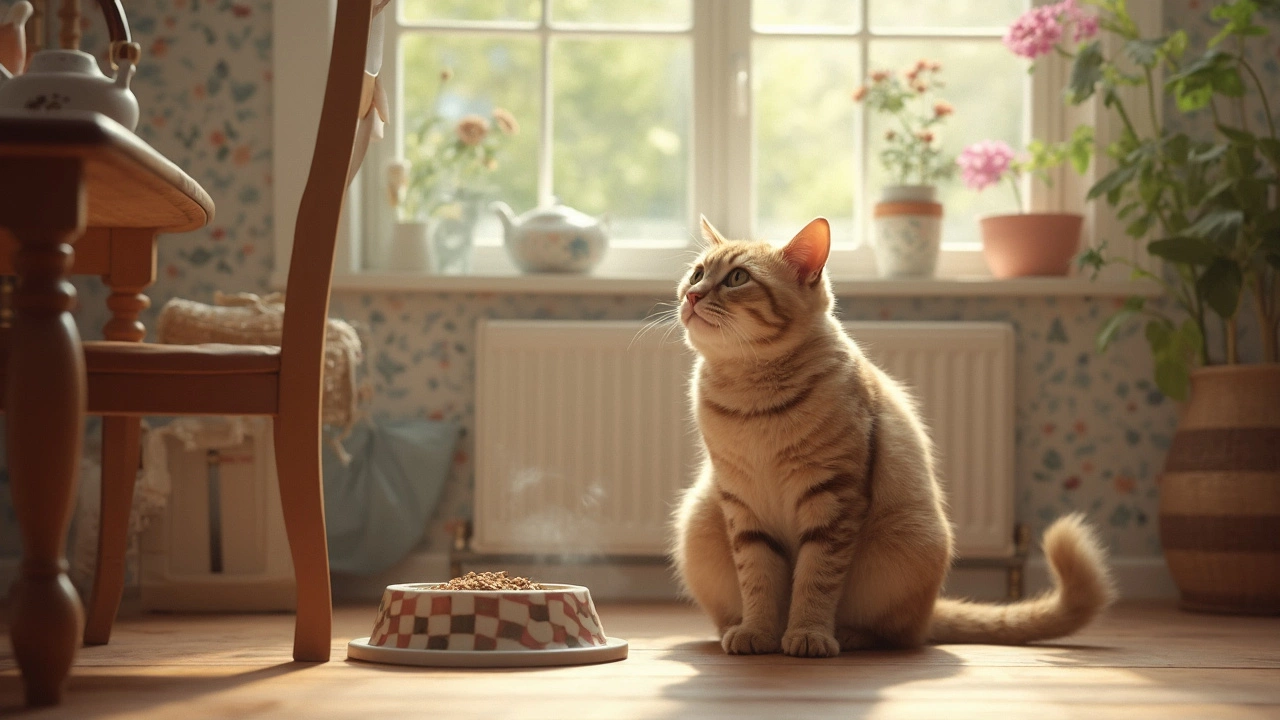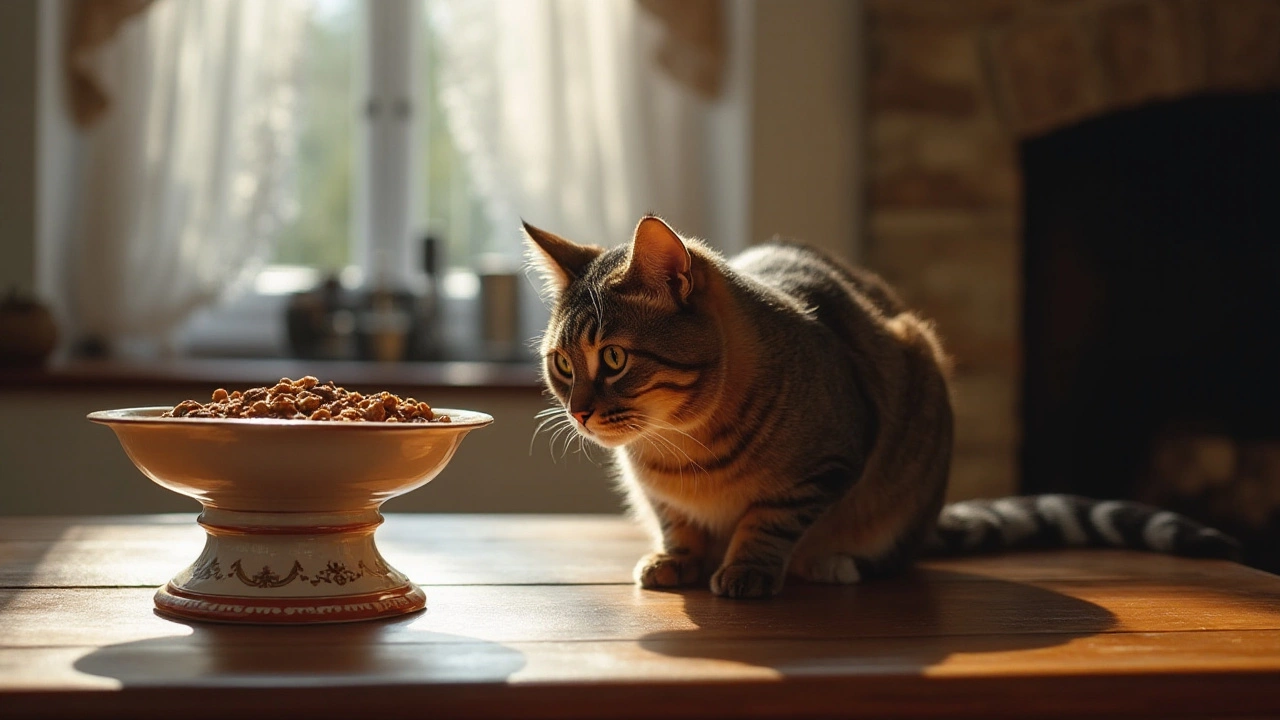Cat Food Guide – What Every Cat Owner Should Know
If you’ve ever stared at a bag of kibble or a tin of wet food and wondered what’s really inside, you’re not alone. Choosing the right cat food can feel overwhelming, but it doesn’t have to be. In this guide we’ll break down the basics: what to look for on the label, how often to feed, and how to keep your cat’s bowl fresh and safe.
Choosing the Right Cat Food
First up, dry vs. wet. Dry kibble is convenient and cheap, but many brands hide low‑quality fillers. Look for real meat as the first ingredient and steer clear of excessive corn, wheat or soy. Those ingredients can be hard for a cat’s short digestive tract and may cause weight gain over time.
Wet food adds moisture, which helps prevent dehydration – a common issue in indoor cats. When picking wet food, check the protein content; aim for at least 8‑10% protein on the label. Avoid cans that list by‑products or artificial preservatives as the main components.
If you’re mixing dry and wet, you can boost the dry kibble’s moisture by adding a splash of water, low‑salt chicken broth, or a bit of bone broth. This simple trick makes the bowl more appealing and supports kidney health.
Feeding Schedule and Portion Tips
Most cats do best with two meals a day – breakfast and dinner. Splitting the daily calorie count into two portions keeps blood sugar steady and reduces the chance of overeating. For a 10‑lb adult cat, about 200‑250 calories per day is a good target, but adjust based on activity level and vet advice.
Measure the food. Using a kitchen scale or a proper scoop eliminates guesswork. If you’re feeding wet food, a typical 3‑oz can provides roughly 80‑90 calories, so a 10‑lb cat would need about two to three cans spread over the day.
Leaving wet food out all day isn’t ideal. Bacteria can multiply quickly at room temperature, turning a tasty meal into a health risk. If you want to give your cat access to wet food for longer periods, keep the bowl in the fridge and serve fresh portions every 2‑3 hours.
Watch for hunger signals. A cat that paws at the bowl, meows loudly, or follows you around after meals may be under‑fed or simply seeking attention. On the flip side, sudden overeating can hint at a medical issue like diabetes, so keep an eye on changes.
Finally, remember to rotate protein sources. Feeding only chicken for months can lead to nutrient gaps. Switch between fish, turkey, and rabbit to keep things balanced and interesting.
By focusing on quality ingredients, consistent feeding times, and proper portions, you give your cat the best chance at a long, healthy life. Keep this guide handy, and you’ll feel more confident every time you open a new bag or tin.
- Morgan Ainsworth
- 0 Comments
Should Cats Have Access to Food All the Time? The Truth About Free Feeding
Leaving food out all day might seem kind, but it’s often unhealthy for cats. Learn why scheduled feeding is better for weight, energy, and long-term health - and how to make the switch easily.
View More- Morgan Ainsworth
- 0 Comments
Why Veterinarians Recommend Fancy Feast Cat Food
Veterinarians back Fancy Feast for its protein, taurine, and moisture levels. Learn the nutritional reasons, compare it with other premium brands, and get feeding tips for healthy cats.
View More- Morgan Ainsworth
- 0 Comments
Can Cats Survive on Dry Food Only? A Complete Guide
Discover if cats can live on dry food only, learn essential nutrients, choose quality kibble, and manage hydration for a healthy feline diet.
View More- Morgan Ainsworth
- 0 Comments
Do Cats Stop Eating When Full? Understanding Cat Feeding Behavior
Get the facts on cat eating habits. Learn if your cat will stop eating when full, the risks of overfeeding, and how to feed your feline for best health.
View More- Morgan Ainsworth
- 0 Comments
Dry Cat Food: What Ingredients Should You Avoid?
Dry cat food might line store shelves, but not every crunchy kibble is great for your cat. Some common ingredients in dry cat food can upset your feline's health in the long run. This article breaks down what’s really inside those bags and what you should keep an eye out for. You’ll get practical tips so you can spot problems before your cat does. If you want your cat to live healthier and longer, start with what goes in their bowl.
View More- Morgan Ainsworth
- 0 Comments
How Many Times a Day Should a Cat Eat? Simple Answers for Healthy Cats
Ever wondered how often your cat actually needs to eat? This article lays out straightforward advice on daily cat meal schedules, the best feeding routines for different ages, tips for keeping your cat at a healthy weight, and what errors to avoid. It also touches on why some cats seem hungrier than others. Get ready to make feeding time less confusing and more beneficial for your favorite feline.
View More- Morgan Ainsworth
- 0 Comments
How Much Wet Food Should a 10 lb Cat Eat Per Day?
Wondering how much wet food to give your 10 lb cat each day? This article cuts through the confusion and gives practical, clear answers. We'll cover the right portions, what to watch out for, and why a one-size-fits-all approach doesn't work for cats. Plus, you'll get smart feeding tips from real-world experience. Keeping your cat healthy has never been easier.
View More- Morgan Ainsworth
- 0 Comments
Is It Okay to Leave Wet Cat Food Out All Day?
Wondering if you should leave wet cat food out all day? This article dives into the pros and cons of doing so, considering food safety and your cat's health. Learn how temperature, bacteria, and your cat's habits play a role. Get tips on feeding schedules and keeping things fresh and safe for your feline friend.
View More- Morgan Ainsworth
- 0 Comments
How Often Should You Feed Your Cat Daily?
Feeding your cat the right amount and at the right times is crucial for their health. Cats are creatures of habit and require consistency in their feeding routines. This article will explore how often you should feed your cat each day, tips for balancing their diet, and the role of your cat's age and lifestyle in determining their feeding schedule.
View More- Morgan Ainsworth
- 0 Comments
Can I Use Dawn to Wash My Cat? Here's What You Need to Know
Ever wondered if you can use Dawn soap to clean your cat? While Dawn is known for its grease-cutting properties, figuring out its safety for pet grooming is crucial. This guide unpacks whether it's a good idea, what experts suggest, and essential tips for safely bathing your feline friend. Understanding proper cleaning methods ensures your cat stays healthy and happy.
View More- Morgan Ainsworth
- 0 Comments
How Often Should You Be Feeding Your Cat Each Day?
Figuring out the right feeding schedule for your cat can be challenging. This article explores how many times a day you should feed your feline friend, considering their age, health, and lifestyle. We offer practical tips for ensuring your cat gets the right amount of food without overeating. Learn the importance of monitoring your pet's weight and consulting your vet for personalized advice. Discover the significance of a consistent feeding routine and how to adapt it as your cat grows or experiences health changes.
View More- Morgan Ainsworth
- 0 Comments
Understanding Cat Eating Habits: When is Enough?
Understanding whether cats will stop eating when they are full is crucial for feline health. Cats have unique dietary behaviors that differ from humans, often guided by instinct and environmental factors. This article delves into the feeding habits of cats, exploring how their eating instincts work, potential health implications if they don't stop eating, and tips for pet owners to ensure their cat maintains a healthy diet. Additionally, it highlights signs that may indicate your cat needs a dietary adjustment.
View More
